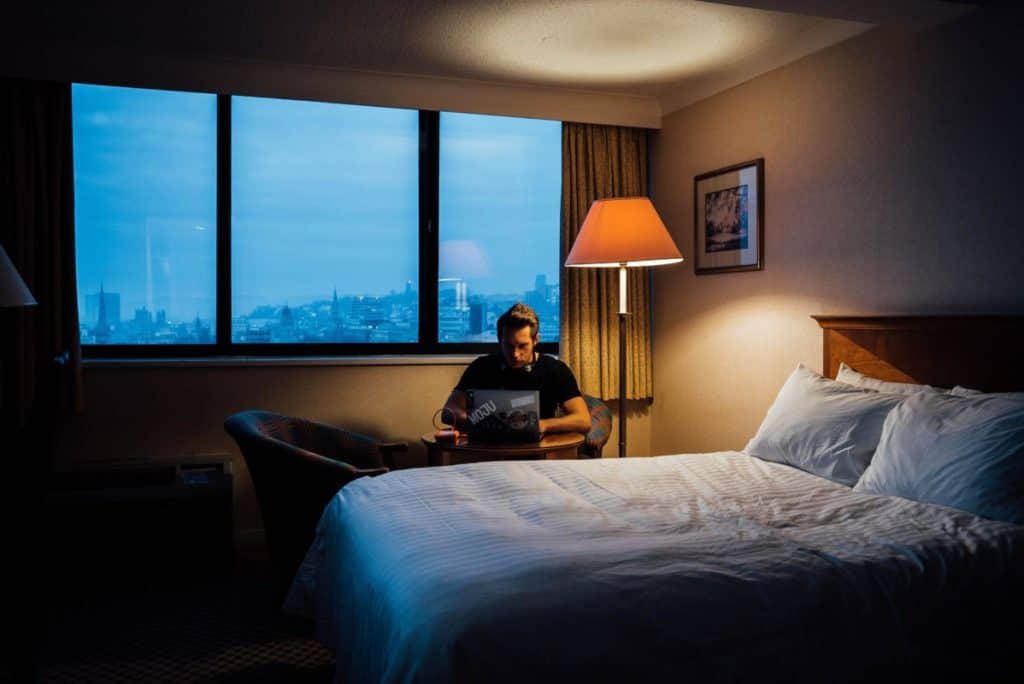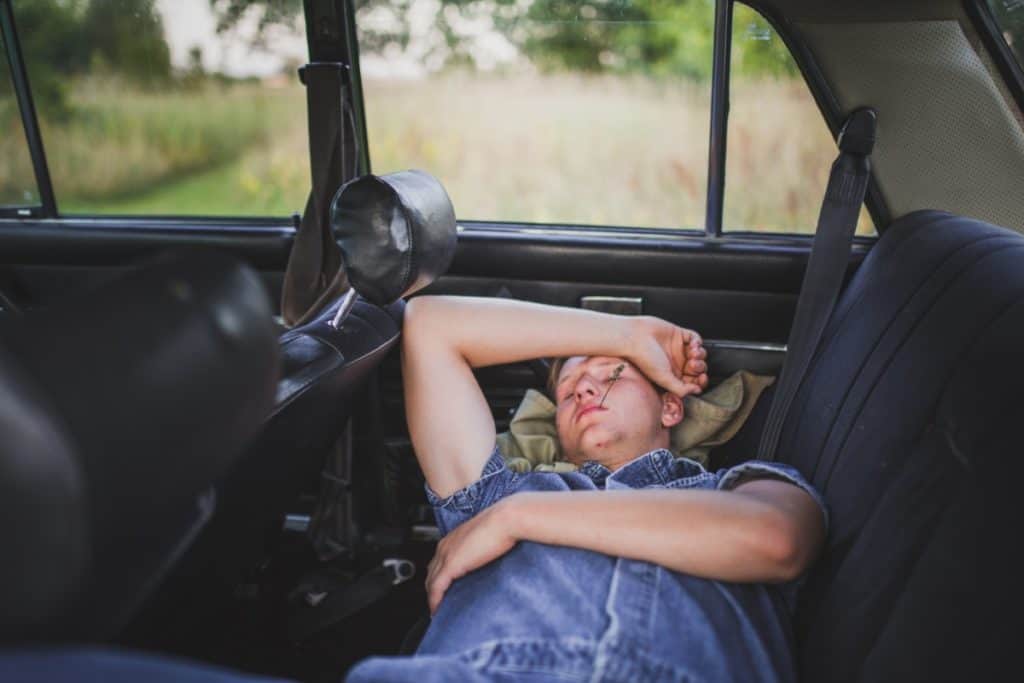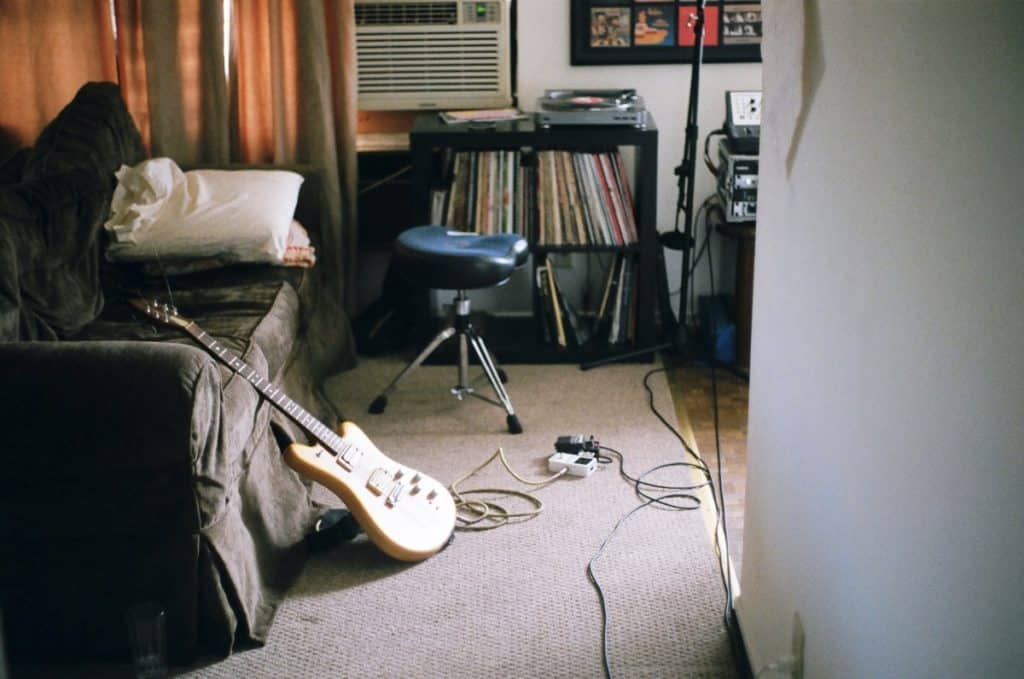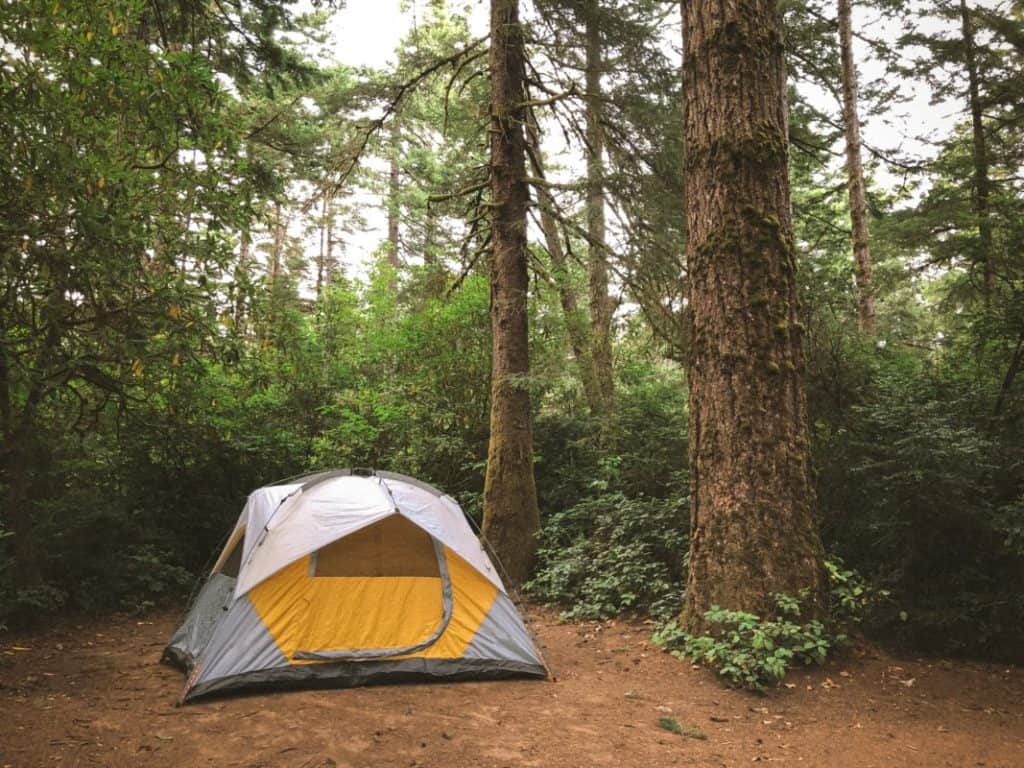Touring is one of the most glamorized aspects of being a musician. But for many touring acts, especially those just getting started, there can be some unexpected surprises, like where you might have to sleep on your first few tours.
Where do musicians sleep on tour? Touring musicians sleep where they can. Depending on a tour’s budget, musicians sleep in hotel rooms, the tour van (or bus), a host’s living room, or various campsites.
Unfortunately, a hotel room (with clean sheets and indoor plumbing) is a luxury many bands are forced to forgo on low-budget tours.
Even though it might seem like cramming five musicians into a Sprinter van would be a fun adventure in your early twenties, many bands don’t have much foresight regarding finding comfortable hotel alternatives on tour.
HOTEL ROOMS

One of the biggest misconceptions many bands have about touring is that they’ll get to stay in a hotel room every night. Although it’s not impossible, even for an up-and-coming band, it requires much more planning and careful consideration of the tour budget.
According to a study of hotel room prices in the U.S., the average price of hotel rooms is $137 per night. That number is almost double in major cities like Los Angeles and Seattle.
Many hotels also have maximum occupancy rules that increase the room rate if you’re honest about how many people stay in a single room. Unless you’ve only got two or three people in your band, you might have to rotate who gets to spend the night in a bed and who has to sleep in the van.
When a second room could land you anywhere between $300 and $500 a night, the cost of putting the entire band up in a hotel is simply out of the question on most tours.
Even for bands that might make enough money to cover the cost of two hotel rooms every night, being in a band is still a business. If anyone wants to get paid at the end of the tour, the smarter option is usually to forgo the luxury of clean sheets and indoor plumbing and crash in the van.
IN THE VAN

Most bands end up sleeping in their van to save time and reallocate budget funds.
Another misconception about touring is that all bands have huge sleeper-style tour buses with bunk beds and a bathroom — like the ones you see on BUS INVADERS. In reality, most bands tour in a van (like a Mercedes Sprinter or Chevy Express), which often doubles as a place to sleep.
For the sake of this article, we will focus on vans since touring on a sleeper bus is self-explanatory.
Sleeping in the van can help keep tour costs low. The money saved on hotels can be spent promoting the tour or on everyday expenses like gas, food, laundry, etc.
Also, by taking driving shifts, band members can sleep on the road and get some rest on the way to the next city instead of spending the night in a Walmart parking lot.
However, there are some major downsides to sleeping in the van.
For starters, vans just aren’t made for sleeping. Depending on how many people you have on tour with you (band members, production, photo/video, merch team, and other crew) even a 15-passenger van can start to feel very crowded.
Some bands get creative and build beds out of 2x4s, but that takes up a lot of sitting room, and if you get pulled over with half the band in makeshift bunk beds, it can be an expensive ticket.
Touring in a van doesn’t have to be uncomfortable. Check out The Ins & Outs Of Touring In A Van & Making It A Comfortable Experience.
Also, it might not be necessary to mention, but a van has no bathroom or shower. Fast-food chains, gas stations, and other rest stops are pretty easy to come by, but showers are somewhat of a commodity on tour.
If someone in the band has a membership at a gym with multiple locations nationwide, like Anytime Fitness, you might be able to grab a shower there.
More than likely, you’ll need to make friends with someone willing to host the band for an evening. Hopefully, they’ll let you sleep and shower in their home.
HOST’S LIVING ROOM

Couch surfing in someone’s living room can be one of the most comfortable and affordable ways to get some sleep on tour. Staying with a host can include all the regular comforts and luxuries of a home without the expense of a hotel room.
Depending on the person you’re staying with, you’ll likely be able to shower, do some laundry, and maybe even cook breakfast in the morning.
There probably won’t be a spare bed for each individual member of the band, but a couch in the living room or a cot on the floor will certainly be more comfortable than a bench in the van.
Unfortunately, finding a host isn’t always easy. If you know someone in the area, reconnecting with friends or relatives can be a great excuse to spend the night.
But you can also try to stay with fans. When you book the tour, put out feelers on social media. Ask if anyone in your network of followers (or anyone they know) would give your band a place to stay for a night. Schedule your stay in advance, just like you would a hotel — even offer to pay (if you can).
If you’re hard-pressed for cash, suggest a trade, like a living room acoustic performance or free merch.
But be smart — don’t just stay with anyone. A free place to sleep might not be worth the hassle if you’re staying with a crazed super-fan or someone with 50 cats.
If you do go this route, remember: you’re a guest in someone else’s home — their roof, their rules. No one wants to let a bunch of egocentric rock stars trash their home and steal their iPhone charger. Unless you want to sleep outside, be polite, clean up after yourself, and don’t piss off the neighbors.
CAMPSITES

If you’ve spent your hotel budget, exhausted the hospitality of all your friends and extended family, and can’t handle another night in the van, you can always try to rough it under the stars. Camping costs next-to-nothing, and as long as you don’t need an electric hookup (or try to camp somewhere like Yellowstone), many campsite fees are laughably affordable.
It might not seem glamorous, but turning a summer tour into a cross-country camping trip can be a great way to see more of the world than just green rooms and hotel lobbies. It also gives you some personal space, which can be hard to come by on tour.
Even if you’re planning to sleep in the van most nights, packing a few lightweight tents (or hammocks) provides alternative sleeping options in case you occasionally want some fresh air. With reliable gear and the right campsite, camping can be surprisingly comfortable. Many campsites now have bathrooms, and some even have showers.
However, finding a campsite in or near major cities can be difficult if you’ve booked a club tour. And nobody (except maybe Wim Hof) wants to be camping in the midwest in the middle of winter.
Unless you’re willing to camp underneath an overpass in January, it might be a little unlikely that you’ll always be able to lean on camping to keep your tour expenses low.
But under the right circumstances, camping can be a great alternative to cashing out on hotels, mooching off your parents’ cousins, or spooning someone’s dirty laundry in the back of the van.
Of course, there are other options for catching some Z’s on tour, but these are the most common ways we’ve seen bands get their beauty rest on long-haul low-budget runs.
RELATED QUESTIONS
How do bands do laundry on tour?
Bands do laundry when and where they can. If there’s money in the budget, bands will wash a few loads at the local laundromat or their hotel (if it has a laundry room). Occasionally, a host will let the band use their personal washer and dryer—in some cases, bands will wash their clothes in the sink and let them drip dry. Altertanitivley, some bands don’t do laundry at all (another reason you might not want to sleep in the van every night on tour).
How do bands transport equipment?
Bands usually transport equipment in a trailer, hitched to the back of the tour bus or van. Smaller bands that aren’t planning to be on the road for long periods of time will often cram their gear into a car, pickup truck, or mini-van to shuttle equipment back and forth from the venue.
For more industry tips and music marketing hacks, check out Ennui Magazine.
You can also follow us on Facebook, Twitter, Instagram, Pinterest, and YouTube.
